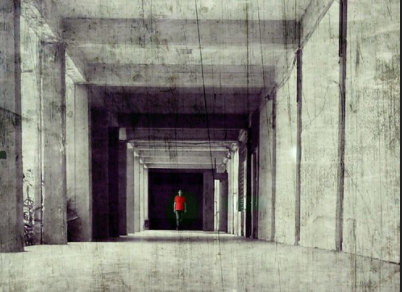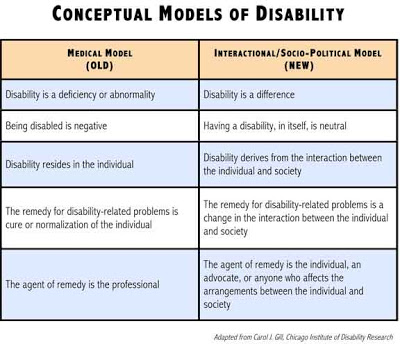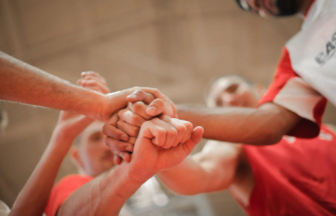- אודות
- המסלול האקדמי
-
- לימודי תעודה
- מכינות
- רישום לתואר ראשון

| | 21/04/2021
כתבה מלוות וידאו המספרת את ניסיונו של מורה צעיר בשינוי עמדות ביחס לאנשים עם מוגבלות בעיקר בתחום הפנאי והנופש כולל ספרט חוויתי על ספורטאי צעיר בסקייטבורד - שהוא עיוור מלידה
http://www.graphicclassroom.org/2010/08/disability-sports-in-elementary.html
tuesday, august 3, 2010
By Chris Wilson
Editor-in-Geek
Even before I considered changing careers from the disability field to becoming a teacher, I worked with youth. I once accompanied a group of high school students to Colorado to volunteer for a week in a recovery program/school for severely abused children and pre-adolescents in .the juvenile justice system.
One of the teens on the trip had a mental and physical disability; I’ll call her Casandra. At the end of our volunteer work, we took the teens on a white water rafting excursion. Casandra was concerned because she was partially paralyzed on her left side.
She was stunned at my response and, I think, quite hurt that I would say such a thing and do it so bluntly. Then I winked and gave her a wry smile. Cassandra’s disability was not really holding her back, her thinking was. We later went to a canyon and we no more than opened the van doors that the kids sprinted off down the treacherous, rocky hillside to play on some boulders. Again:
She took my arm and we walked –– differently than the other teens, granted –– slowly down the embankment to the boulders below. Casandra smiled the whole time and it was the last time she ever asked me if she could do anything. The rest of the trip she either did it on her own or she told me what she needed to complete the task and asked if I would provide her the assistance. No more of the “can I” nonsense
Another friend of mine –– I’ll call her Diana –– was born with cerebral palsy and low vision and has spent most of her life using a wheelchair. During her elementary years, Diana was placed in mostly self-contained special education services because she had CP and was blind. Naturally, that is where she belonged, right? She spent several years in special education services before a teacher questioned the placement. With the permission of her mother, Diana was tested and the school discovered the child with physical disabilities also tested as gifted. She was transferred out of special education and into the gifted program.
Everyone experiences barriers to success –– hurdles we must address in order to achieve our goals. Those barriers increase exponentially for persons with disabilities. Sometimes the individual causes the problems, but in most cases the barriers are institutional or societal and are based on stereotypes.
Despite working in the disability field for nearly a decade, I still battle my own disability-related stereotypes. Case in point, Sport’s Illustrated Kids’ SKATEBOARD SONAR graphic novel published by Stone Arch Books.
I was into the book 16 pages when I stopped and thought can blind people really skateboard? The minute I thought it, I knew I was headed into a stereotype thought process. I put the comic down and contacted Director of the Missouri State University Disability Resource Center Katheryne Staeger-Wilson. I knew I needed a paradigm shift. If I needed it, I was willing to bet other teachers did too.
Within minutes she pulled up two You Tube videos of Cameron, a local blind skateboarding college student.
“People with disabilities face many myths, stereotypes and assumptions,” said Staeger-Wilson. “These barriers are built-in to society and can be very detrimental to the success of those with disabilities.”
She then related a story about a former blind student of hers (we will call her Amelia) who took a journalism class. The professor assigned the students to write an article on their favorite hobby, their passion. The professor then turned to the blind student and said, “Don’t worry, Amelia. You can just do yours on blindness.”
The assumption, Staeger-Wilson explained, was that the person with a disability had no hobbies, interests or passion beyond disability. Staeger-Wilson explained that the student was offended and hurt, but spent her time trying to figure out how best to prove her validity as a human being to the professor.
“Disability is just different,” said Staeger-Wilson. “It is nothing bad. People with disabilities do the same things others do, they just might do it differently.” Staeger-Wilson offered the following chart for establishing a disability-related paradigm shift.

Matty and Tyson are 13-year-old skateboarders and best friends. They decide to enter the local skateboarding contest. Some people don’t think Matty should enter the contest because he is blind and everyone knows blind people cannot skate. The local bullies are the worst. They pick on Matty and Ty and try to intimidate them by making fun of Matty and his blindness. Matty proves his worth on the half-pipe without anyone’s help, busting up many of the major stereotypes about people with disabilities along the way.
Diversity is often –– mistakenly –– thought of exclusively in terms of race, oftentimes the definition being race-specific. However, diversity includes race, ethnicity, culture and even sub-culture. Disability is an often overlooked, but much larger, population than any given racial group because disability occurs across all races and ethnicities. It behooves us to infuse disability culture understanding within the classroom to meet the needs of 21st century learners and to reflect national and state requirements.
From the SKATEBOARD SONAR website, a teacher can select his or her home state to find which standards correlate to this title. Missouri has 13 social studies and communication arts standards connected to this title.
Following is an outline of the lesson plan I am considering for grades 3-4:
Sit around the Smart Board.
Use a document camera to complete a Picture Walk.
In cooperative groups discuss: “Can a blind person skateboard? Why or why not?”
Give time for discussion.
Each group shares their thoughts with whole class.
Watch Cameron’s You Tube video (above).
In cooperative groups discuss:
“Would you like to change your answer? Why”
Read the story aloud using the document camera.
Stop periodically and discuss the myths and stereotypes presented.
Using our class blog, choose one of the questions and answer it.
SKATEBOARD SONAR does a great job addressing the myths, stereotypes and assumptions about people with disabilities. When Matty first tried to enter the skateboard contest, the clerk at the counter tried to deny him access, questioning if blind people were allowed to enter (institutional barrier). Matty quipped that he could not see one, so they had to include him. Clinton, one of the two local bullies, kicked a trashcan in front of Matt to see if he was really blind (Myth: People with disabilities are fakers).
Bingley, the big bully, argued that Matty’s presence in the finals was an act of charity because he did not earn it “fair and square” (Stereotype: People with disabilities cannot do things on their own without help from professionals, institutions, or others.) When it is time for Matty to skate against Bingley, the crowd goes nuts and the commentator calls him a “hero”. When Bingley asked why Matty was a hero, Ty says it’s because everyone knows Matty. He does not call him a hero because he is blind and skateboards. (Myth: People with disabilities are heroes because they do things other people do.) Overcoming struggle does not make one a hero. Having hobbies, interests, or passions does not make a person a hero just because they have a disability. Disability is a natural part of life and persons with disabilities overcome obstacles just like everyone else.
My culminating event, the blog topics, will address the myths, stereotypes and assumptions above and give students a chance to demonstrate their learning about disability culture. The questions will be differentiated so students can choose questions that best meet their level of understanding and ability. The cultural understanding and use of technology is the standard being evaluated, not the writing.
SKATEBOARD SONAR gives teachers a resource to use to address disability culture and change the way society views those with disabilities. It is a title that is brilliantly designed to help students discover their own prejudices and stereotypes and help them view disability from person centered model, rather than a medical or curative model. It is highly recommended for elementary and early middle school grades.

27/04/2021